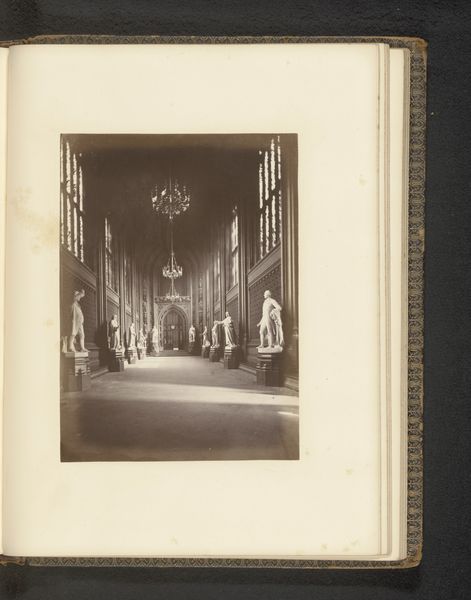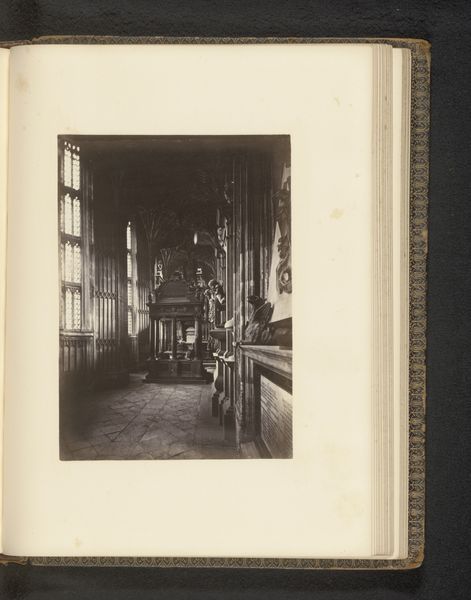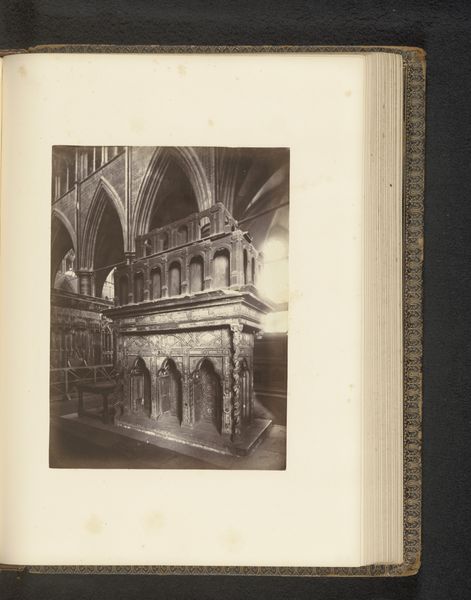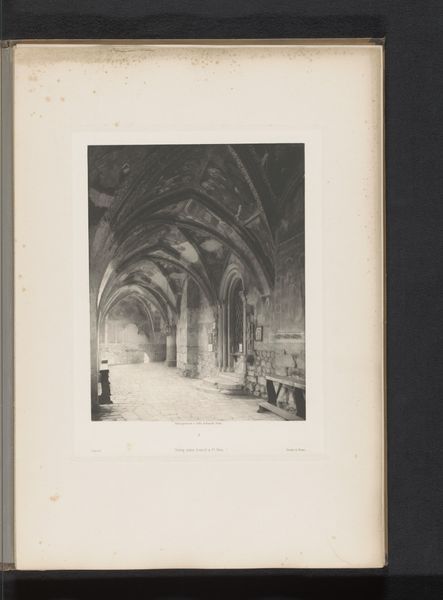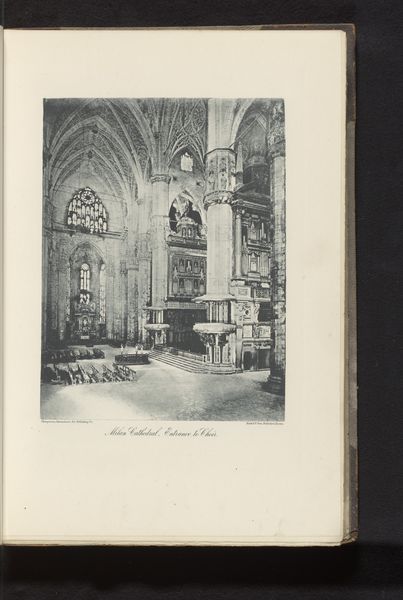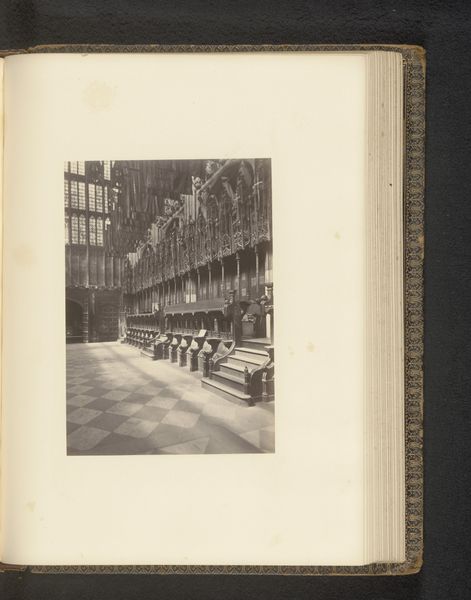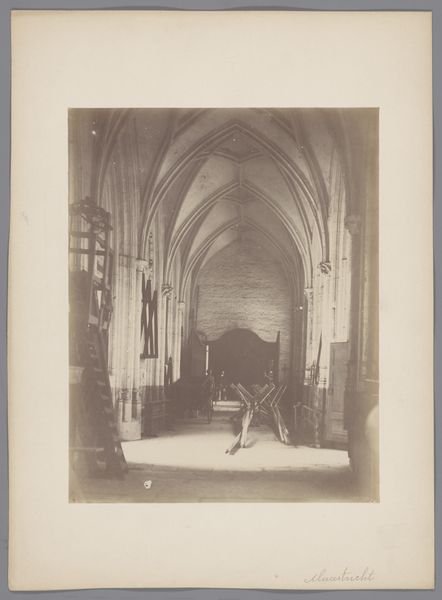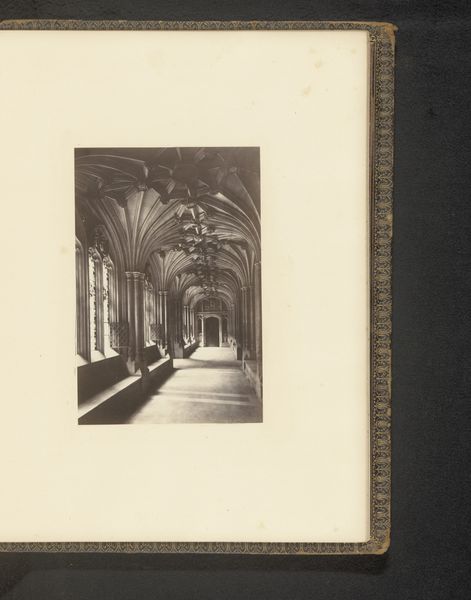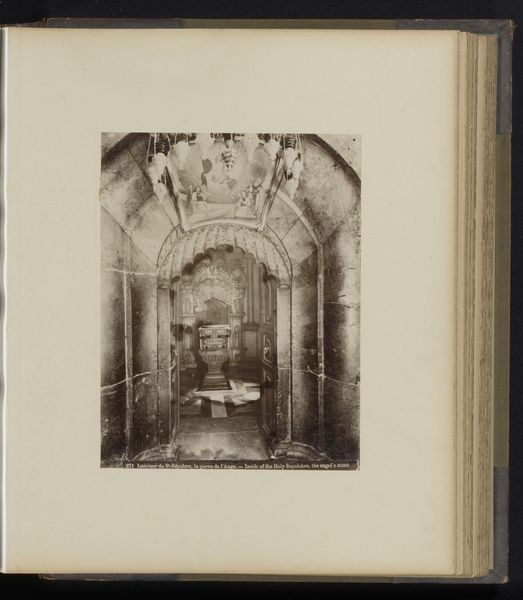
photography, gelatin-silver-print, albumen-print
#
landscape
#
photography
#
gelatin-silver-print
#
history-painting
#
albumen-print
Dimensions: height 194 mm, width 141 mm
Copyright: Rijks Museum: Open Domain
Curator: This evocative albumen print, titled "Kapel van Henry VII te Westminster Abbey," captures the chapel's grandeur sometime before 1869. It’s attributed to John Harrington. What strikes you first? Editor: The sheer volume. Look at how Harrington has captured the immensity of that Gothic space. There's a weight and stillness about it. Curator: It certainly conveys power, doesn't it? And, of course, we can think about the social and political ramifications embedded within Westminster Abbey itself. For centuries, it has been a stage for royal ceremony, a physical representation of British identity and authority. Editor: Absolutely. I'm also drawn to the albumen print process itself. The way it was created: the painstaking labor required, coating paper with egg whites, exposing it to sunlight. It’s fascinating how the very materials and labor involved in making this photograph echo the centuries of craft and labour poured into building the Abbey itself. Curator: Precisely. The photographer chose this specific medium deliberately, understanding its archival quality. There is such consideration when deciding to use gelatin-silver, particularly in the context of depicting historical significance. What is left to be discovered and captured? The building acts as a historical record. Editor: You're right to bring that up. I see these elaborate tombs—visible symbols of wealth and power immortalized through the combined labor of quarrymen, stonemasons, and sculptors. Their craft sustained by the royal purse. The use of silver as a pigment feels significant here; another example of a rare commodity in use and an item of expenditure. Curator: The composition emphasizes a sense of linear perspective, inviting the viewer into the scene. Consider also that Henry VII’s chapel became, over time, a visual marker of Tudor legitimacy and a site for the ongoing construction of dynastic narrative, playing on earlier English monarchs like Edward the Confessor whose relics resided in the Abbey. Editor: It makes me wonder about the photographer's intent here. To what extent are they simply documenting history, and to what extent are they consciously engaging with, or perhaps even subtly critiquing, the socio-economic underpinnings of that history? Curator: A pertinent question indeed. Harrington was, no doubt, also capturing the collective memory that these buildings help to sustain and how photography can contribute to the narratives we construct and reinforce. Editor: Indeed. And the dialogue between photography and the chapel underscores the relationship between time, material, and lasting human impact.
Comments
No comments
Be the first to comment and join the conversation on the ultimate creative platform.
